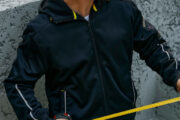Shopping for kids’ shoes can feel overwhelming for most parents. There are so many options that it might even seem like a scam if you don’t know a lot about kids’ shoe gear. You may think there can’t possibly be that many differences between sneakers, right? Not to mention that a growth spurt almost always leads to buying new shoes for our children. How important is choosing the right shoes for kids? And how to choose the right pair?
The Importance of Choosing the Right Shoes for Children
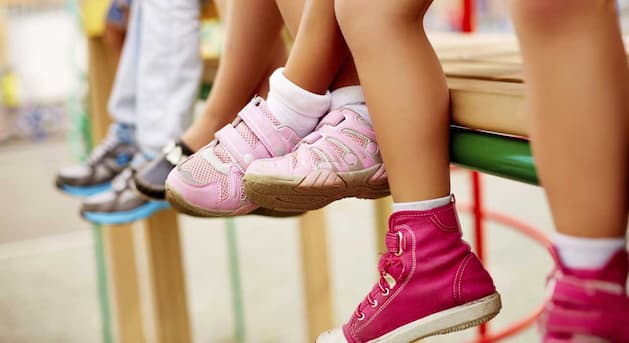
Making sure your child is wearing supportive, high-quality footwear is one of the first things you can do to protect their foot health. Your little one is more susceptible to sports-related injuries, like ankle sprains and fractures, since children’s feet are still developing. Wearing poor-quality footwear that doesn’t provide adequate support usually leads to blisters, toenail damage, and heel pain.
According to specialists, choosing a good pair of children’s sneakers with the correct orthotics can considerably improve and even cure most foot disorders. That’s why most podiatrists are strong proponents of proper shoe fitting for children.
How Do I Choose the Right Shoes for Kids?
Naturally, when you’re shopping for comfy childrens trainers, you need to be on the lookout for a few signature features. After all, you want your kiddo to have sneakers that match their unique personality while also providing the support they need for growing feet.
Your Kid’s Age
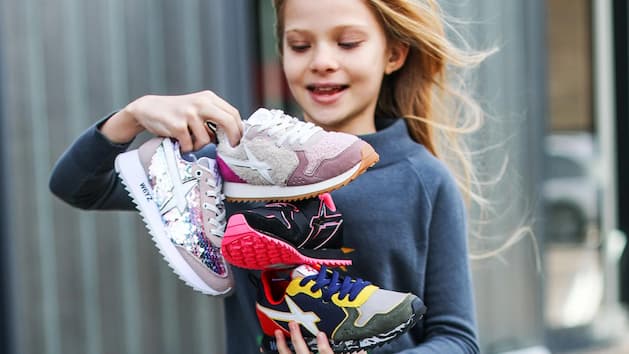
All parents know that sizing can vary from one brand to another, whether we’re talking about baby clothes or kids’ footwear. So, your child’s age shouldn’t be a deciding factor when purchasing sneakers for them because everyone develops at a different rate. It needs to depend on the developmental stage of your child instead.
Babies who haven’t started walking yet don’t even need shoes. However, if you decide on buying a pair for a child who isn’t walking yet, go for an option that’s not too tightly fitted and has soft soles.
Toddlers who have started walking should wear shoes only outside the house, as at this age, going barefoot is the general recommendation. If you’re buying shoes for your toddler who’s started walking recently, opt for a pair of children’s trainers that has:
- A smooth, flexible, non-slip sole
- Supportive padding at the ankle and around the rear of the heel
- Secure shoe closures that won’t loosen or take off too quickly
For kids four and up, look for shoes with the following characteristics:
- Firm sole – the shoe’s toe should flex, not bend in half
- A solid heel counter that’ll secure the heel in place and prevent it from moving back and forth
- Laces – shoes for your kid need laces to fit them properly. Avoid slip-on styles or straps with Velcro. Laces also make it possible to insert orthotics into the shoe.
Purpose
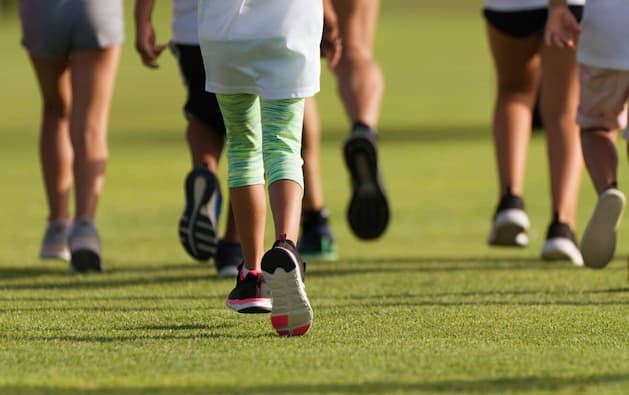
After you decide on the correct shoe fit for your kid’s age, you need to find the appropriate shoe type for the activities your child will be wearing them.
- Walking shoes: Children’s sneakers for walking should have a slightly rounded end sole and better heel shock absorption. That’ll provide the needed arch support for your kid, as it’ll enable them to transition their weight effortlessly from heel to toe.
- Running shoes: Search for lightweight, flexible running shoes with improved heel control and shock absorption. The soles should feature detailed tread patterns to enhance traction. Running shoes’ added shock absorption and support lower the risk of tendinitis, shin splints, and heel problems.
- Cross trainers: These versatile shoes have the shock-absorbing qualities of a walking shoe, a firm, solid sole, and traction for excellent side-to-side support. They’re the best choice if your child likes to try everything.
- Sneakers with bespoke arch support: Shoes that offer more support, stability, and control over motion work well for most kids. However, a shoe with greater cushioning and a softer midsole may be more comfortable for your child if they have high arches.
Comfort
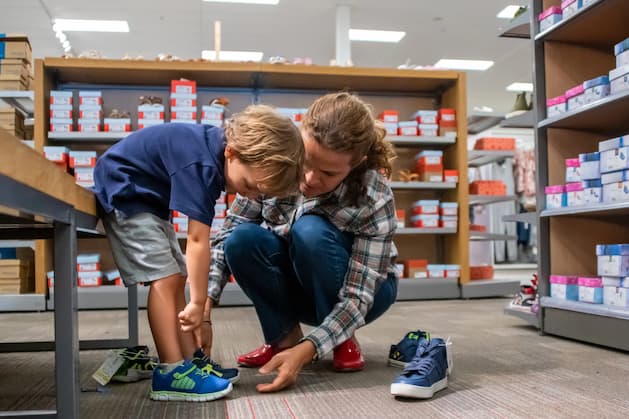
Finding the right fit for your kid isn’t as easy as finding the right fit for yourself and other adults, although for many of us can be a tricky task too. You must check if your kid feels any discomfort and pain when trying to walk in the shoes you’re considering because if that’s the case, it can cause damage to their feet.
It’s essential to find shoes that fit your child’s feet properly in width and length to achieve that. The shoes shouldn’t be oversized, but they should have enough space to grow.
Therefore, when your child tries on a pair of shoes:
- Ask them to stand up straight and put on both pairs of shoes.
- Next, locate their big toe. The distance between the top of their big toe and the end of the shoe should be around the width of a thumb.
- Then, examine the shoe’s heel. Your child’s shoe should fit them comfortably if you can fit your finger between the back of their foot and the shoe’s back. Any tighter and they run the risk of developing blisters; nevertheless, if there is an additional room, the shoes are too large and might be dangerous.
- Last but not least, make your child walk up and down stairs to test their comfort in the shoes.
Ease of Use
Think about how simple it will be for your youngster to put the shoes on and take them off. Hook and loop strips are typically the ideal choice for younger kids who frequently wish to be independent. However, if you choose Velcro, ensure it’s strong enough to hold the shoes on.
Durability
It doesn’t matter if your little one has an active lifestyle or not. All shoes go through a lot of wear and tear, especially given the energy and enthusiasm of children. You’ll want to buy shoes that can withstand the elements and everyday activities.
Look for shoes with reinforced stitching in the toe area and a tough sole that can stand up to scuffs and scrapes. Anything less, and you’ll be shopping for a new pair before you know it.
Aesthetics
While this may not be the most important aspect, you’ll want to pick shoes that your child likes. They’re more likely to wear shoes that they feel good about, which means they’re also more likely to get the support they need.
Sure, you can have the comfiest and most functional shoes in the world, but if your kiddo won’t wear them, they might as well be useless. Consider letting your child pick out their own shoes so they feel invested in wearing them.

